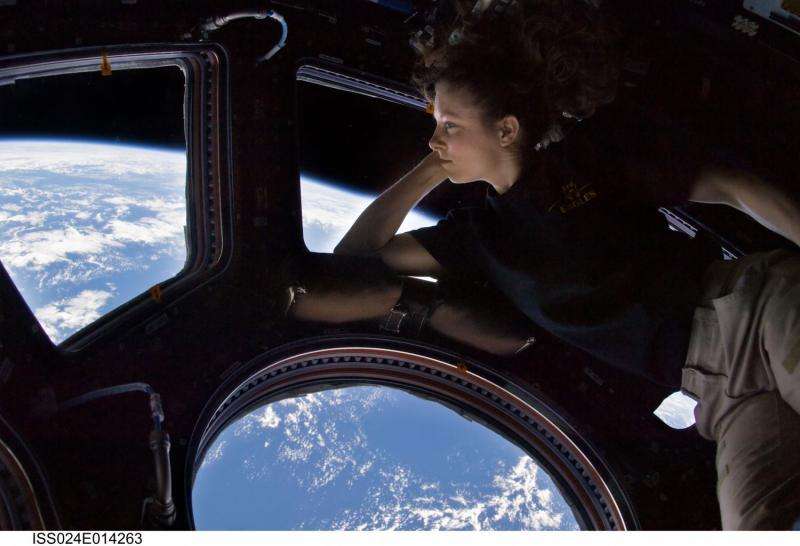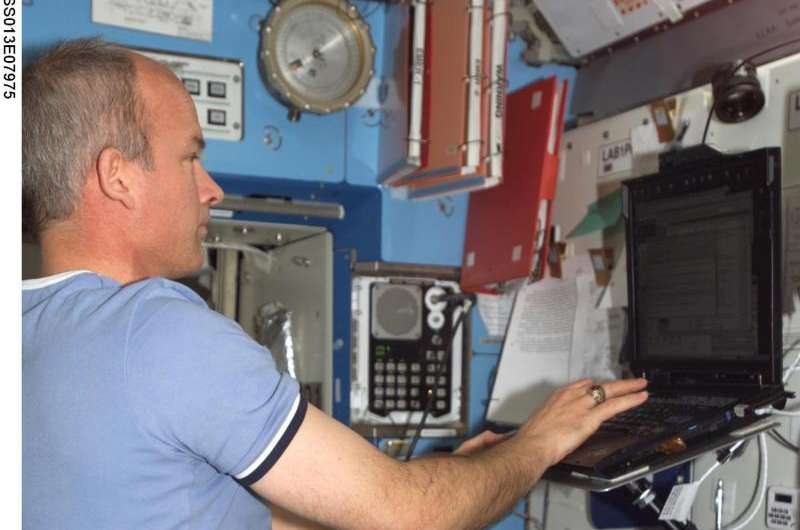Don't stress the small stuff: NASA's One-Year Mission research combats stress and fatigue

Several Human Research Program investigations are being conducted aboard the International Space Station (ISS) as part of NASA's One-Year Mission (1YM) to learn more about how the human body responds to stress in a long-duration, low-gravity environment.
Stress impacts everyone. It can impact a person's ability to perform physical tasks, affect mood, sleep and concentration. Astronauts face unique stresses when they are isolated for long periods of time while conducting critical jobs under tight deadlines. They are exposed to microgravity, radiation, unusual light-dark cycles, higher levels of CO2, nutritional changes and constant noise to name a few.
As NASA prepares for future missions to asteroids, Mars and beyond, it is crucial to have a full understanding of these stresses, as well as methods to monitor crewmembers' responses to them. During the 1YM, five Behavioral Health investigations are being conducted aboard ISS to learn more about the brain and how it responds to stress and fatigue in space.
In the Cognition investigation, researchers measure how spaceflight-related physical changes can affect cognitive performance. Using a computer, astronauts take a well-validated and enhanced battery of ten tests covering a broad range of cognitive areas with each test assessing different brain regions. From this data, researchers will develop a software-based toolkit that: tests future astronauts' comprehension, memory, attention and reasoning, in real-time; determines sensitivity to fatigue and countermeasures; establishes astronaut norms for the test battery; and establishes the feasibility of this assessment in space flight. This investigation is expected to permit rapid measurement of astronaut cognitive performance across a broader range of neurocognitive functions and provide immediate feedback.
In the Sleep Monitoring investigation, researchers test how astronauts manage their sleep and how the space environment can affect circadian rhythm. Astronauts wear a wrist-based Actiwatch Spectrum that records their activity and the ambient light they experience. Data from the Actiwatch Spectrum is used to estimate sleep duration. Bio-mathematical models using sleep and light exposure information are used to predict circadian phase. Data collected from crew members' sleep logs also is evaluated. This investigation is expected to help define light requirements, sleep-shifting protocols, and workload plans for future, long-duration missions.

The Neuromapping investigation studies whether long-duration spaceflight causes any changes to the brain structure, function, motor control and multi-tasking abilities. It uses both behavioral assessments and brain imaging technologies to assess changes in neurocognitive functions. MRIs are used before launch and after landing back on Earth to identify related changes in crewmember neurocognitive function and structural alterations. They also measure how long it takes for the brain and body to recover from possible changes. Pre-flight, during flight, and post flight, a broad ranging battery of sensory, motor, and cognitive tests is applied. Results from the Neuromapping investigation will provide insight into not only the effects of spaceflight on the brain and behavior but also the brain's ability to rewire and remodel itself in response to new stimuli.
The Journals investigation analyzes the astronauts' diary entries to gather data on how crew members adjust emotionally and psychologically to their spaceflight environment. This study converts behavioral and human factors information from journal entries into quantitative data. Insight from this data contributes to the design of procedures, habitats and equipment that can help humans adjust to isolation and confinement while ensuring they remain effective and productive.
Reaction Self-Test is a portable, five-minute task that enables astronauts to monitor the daily effects of fatigue on performance. Periodically, crew members perform a reaction-time test on a computer to measure changes in responses. The test provides objective feedback and informs researchers of astronauts' level of cognitive performance while on space station missions. It also seeks to evaluate effects of sleep loss and circadian disruption. It has applications in understanding reaction times, lapses of attention, sleepiness, and impulsivity caused by fatigue and other factors found in demanding operational environments.
Results from these investigations are intended to improve the technology and methods for testing, monitoring, diagnosing, treating, mitigating and preventing physiological, psychological and neurological disorders. Everyone can benefit from learning more about the effects of stress and fatigue, and more importantly, how to combat it!
Provided by NASA




















